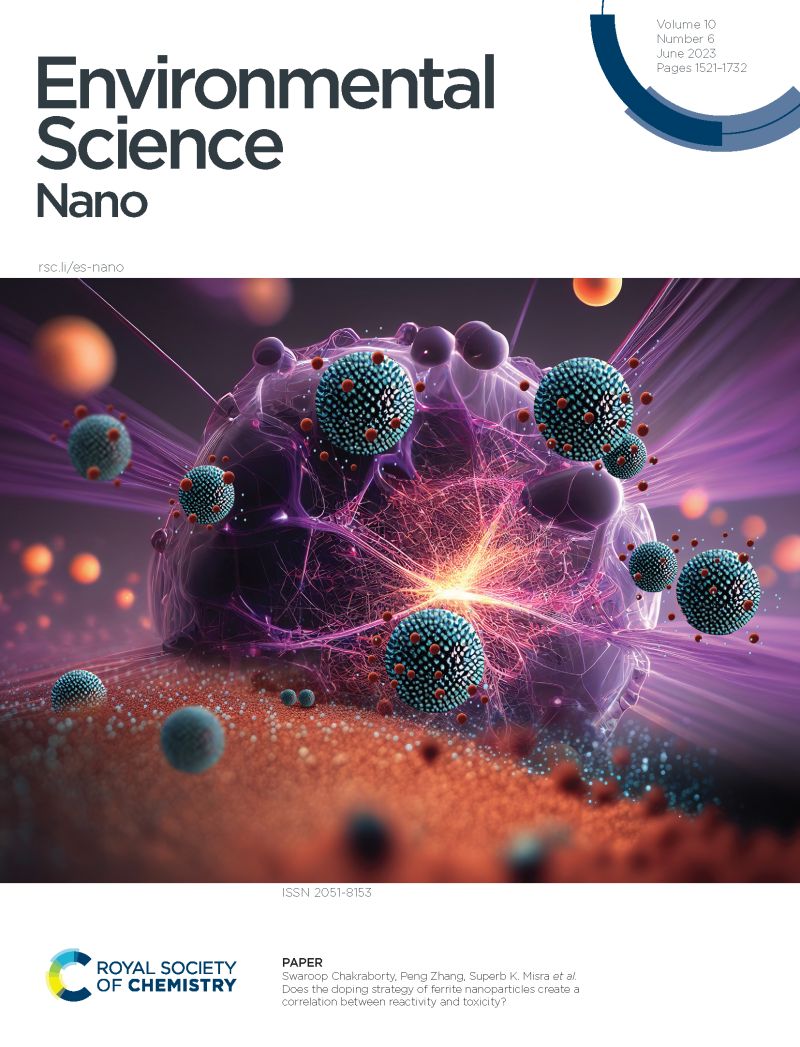Integrated transcriptomic and metabolomic analyses to decipher the regulatory mechanisms of polystyrene nanoplastic-induced metabolic disorders in hepatocytes
IF 5.8
2区 环境科学与生态学
Q1 CHEMISTRY, MULTIDISCIPLINARY
引用次数: 0
Abstract
Micro- and nanoplastic (MNP) pollution is a pervasive and growing problem, posing potential health risks to humans. MNPs enter the human body mainly through ingestion, inhalation, and dermal contact. They accumulate in the liver via the circulatory system and disrupt hepatic metabolism. However, the potential mechanisms underlying metabolic dysfunction caused by MNPs in the liver remain poorly understood. In the present study, integrated transcriptomic and metabolomic approaches were used to address the regulatory mechanisms of polystyrene nanoplastic (PSNP)-induced metabolic disorders in hepatocytes. First, transcriptomic analysis demonstrated the enriched pathways related to fatty acid degradation, fatty acid metabolism, amino acid biosynthesis, and amino acid metabolism and identified the involved critical genes (ANGPTL4, ACSBG1, CPT1A, ACADVL, PSAT1, and PHGDH). Subsequent metabolomic analysis indicated that PSNPs induced metabolic dysfunction by altering vital metabolites, mainly those of lipids (monoacylglycerols, fatty acids, sterol lipids, and glycerophospholipids) and amino acids (tyrosine, ethanolamine, and phenylalanine). Finally, integrated transcriptomic and metabolomic analysis manifested that PSNPs disrupted lipid (ether lipid, arachidonic acid, glycerophospholipid, and linoleic acid) and amino acid (phenylalanine, glycine, serine, and threonine) metabolism. In addition, the validated key genes (HMGCS2, ANGPTL4, ACSBG1, CPT1A, ACADVL, MAOA, COMT, PSAT1, and PHGDH) might contribute to PSNP-induced metabolic disorders. This study brings new perspectives to the underlying mechanism of PSNP-induced metabolic disorders in hepatocytes. It will help manage the health risk assessment of MNPs and improve public and planetary health.

整合转录组学和代谢组学分析,以破译聚苯乙烯纳米塑料诱导的肝细胞代谢紊乱的调节机制
微纳米塑料污染是一个普遍和日益严重的问题,对人类健康构成潜在威胁。MNPs主要通过食入、吸入和皮肤接触进入人体。它们通过循环系统积聚在肝脏中,破坏肝脏代谢。然而,肝脏中MNPs引起的代谢功能障碍的潜在机制仍然知之甚少。本研究采用整合转录组学和代谢组学方法来研究聚苯乙烯纳米塑料(PSNP)诱导的肝细胞代谢紊乱的调控机制。首先,转录组学分析证实了与脂肪酸降解、脂肪酸代谢、氨基酸生物合成和氨基酸代谢相关的富集通路,并确定了相关的关键基因(ANGPTL4、ACSBG1、CPT1A、ACADVL、PSAT1和PHGDH)。随后的代谢组学分析表明,PSNPs通过改变重要代谢物,主要是脂质(单酰基甘油、脂肪酸、甾醇脂和甘油磷脂)和氨基酸(酪氨酸、乙醇胺和苯丙氨酸),诱导代谢功能障碍。最后,综合转录组学和代谢组学分析表明,psnp破坏了脂质(醚脂质、花生四烯酸、甘油磷脂和亚油酸)和氨基酸(苯丙氨酸、甘氨酸、丝氨酸和苏氨酸)的代谢。此外,已验证的关键基因(HMGCS2、ANGPTL4、ACSBG1、CPT1A、ACADVL、MAOA、COMT、PSAT1和PHGDH)可能与psnp诱导的代谢紊乱有关。该研究为psnp诱导的肝细胞代谢紊乱的潜在机制提供了新的视角。它将有助于管理跨国公司的健康风险评估,并改善公众和地球健康。
本文章由计算机程序翻译,如有差异,请以英文原文为准。
求助全文
约1分钟内获得全文
求助全文
来源期刊

Environmental Science: Nano
CHEMISTRY, MULTIDISCIPLINARY-ENVIRONMENTAL SCIENCES
CiteScore
12.20
自引率
5.50%
发文量
290
审稿时长
2.1 months
期刊介绍:
Environmental Science: Nano serves as a comprehensive and high-impact peer-reviewed source of information on the design and demonstration of engineered nanomaterials for environment-based applications. It also covers the interactions between engineered, natural, and incidental nanomaterials with biological and environmental systems. This scope includes, but is not limited to, the following topic areas:
Novel nanomaterial-based applications for water, air, soil, food, and energy sustainability
Nanomaterial interactions with biological systems and nanotoxicology
Environmental fate, reactivity, and transformations of nanoscale materials
Nanoscale processes in the environment
Sustainable nanotechnology including rational nanomaterial design, life cycle assessment, risk/benefit analysis
 求助内容:
求助内容: 应助结果提醒方式:
应助结果提醒方式:


